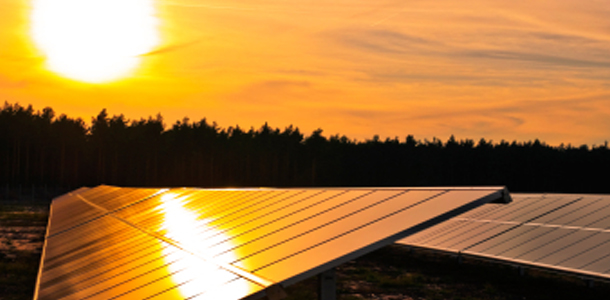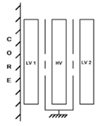
Solar Inverter Step-Up (ISU) Transformers
With the advent of renewable energy, the number of wind and solar farms has been on the rise, and economical benefits were originally found in the use of pad mount transformers to step up the voltage as produced by the solar inverters. The uniqueness of solar inverter step-up (ISU) transformers does not permit for standard off-the-shelf distribution transformers to be used in this application. This article looks at factors we have adopted to meet the requirements of this application and to improve robustness of solar ISU transformers.
Solar ISUs are gaining popularity in the field of green energy, and where economic benefits can be derived in the use of distribution pad mount transformers. There are also sufficient differences that would call for some level of customization. Some of these differences are based on the nature of solar farms and the inverter technology, and others would be based on how they are operated or their failure modes. These include:
- Location of solar farms – As a harvester of solar energy, solar farms are usually located in open areas sometimes with a maximum ambient temperature higher than 40°C, and maximum average daily temperatures over 30°C as per ANSI/IEEE standards. This location is usually remote and the need for transmission at high voltages to grid connection points is also a requirement. To minimize the number of step-up operations, the voltage ratio on the solar ISU transformer is usually high and adds to design complexity.
- Inverter technology – The inverter is the only source of power for the ISU transformer, with sizing of the transformer based on the sizing of the inverter. Due to limitations in inverter technology, as well as increasing the inverter sizes and ratings, (though newer Inverter technologies now make it possible to design and manufacture higher rated Inverters) dual low-voltage windings are being provided on ISU transformers for the optimization of resources and maximizing efficiency. The coupling between low-voltage windings, and the coupling between each of the low-voltage windings and the high-voltage winding needs to be considered.
To ensure the reliability of our designed and manufactured solar ISU transformers, we employ certain considerations for solar ISU transformers applications, including but not limited to:


- Impedance and coupling – We work with our customers to understand their system requirements for impedance matching between each of the LV windings and the HV winding. Also of importance is the level of coupling between the LV windings, and that we can meet our customers’ requirement for the level of coupling between these LV windings. Where no requirement is stated, we would employ concentric windings, but with matching impedances.
- Core – As with all designs, stacked cores are used in all solar ISU transformers. Also, the flux density selected is such that to prevent core saturation due to potential dc components in the LV supply. This reduced flux density also caters for operational issues that could lead to voltage imbalance that would otherwise potentially result in core saturation, increased core noise, or core heating.
- Sizing – We work with the end-user to ensure that the ISU transformer is not sized based on inverter nameplate rating, but on the maximum inverter rating, as overloading could be an issue where the maximum inverter rating exceeds the nameplate rating.
- Cooling capacity – When solar ISU transformers do not have a high harmonic content (with the advent of superior harmonic filters), there is still some heating concern as the period of maximum loading usually coincides with the period of maximum ambient temperatures. We allow for this by also considering the maximum losses at the maximum ambient temperature that the transformer will experience and allow for sufficient cooling based on the load cycle.
- Use of electrostatic shield – We provide low eddy loss electrostatic shields (ESS) between each LV winding and the HV winding due to the usually high voltage ratio to:
- Prevent the capacitive coupling between the LV and the HV voltage windings, as the LV windings in this application are usually ungrounded wye connected windings.
- Prevent the transfer of transients over voltages from the HV winding to the LV winding that may be due to switching operation of circuit breakers or multi-stage capacitor bank.
- Prevent the transfers of high frequency (harmonics) voltage disturbances that are created during the voltage inversion by the inverter.
ISU transformers are now more robust than the standard distribution pad mount transformers.
CONCLUSION: We have used our experience in over several thousands of custom designs to tailor the design and construction of solar ISU transformers to meet the needs of renewable power.
There are other economic considerations not covered in this article, so contact us at 540-354-9892 to assist in developing a robust specification or to answer any further questions.


